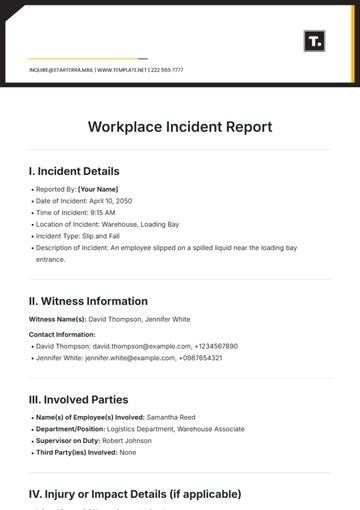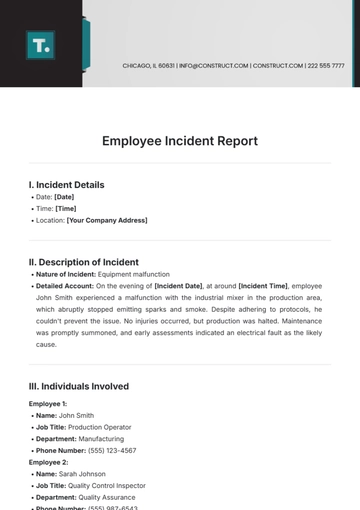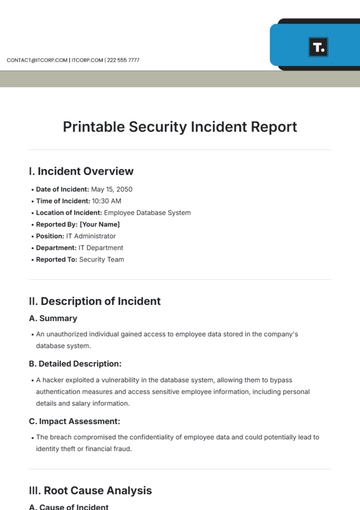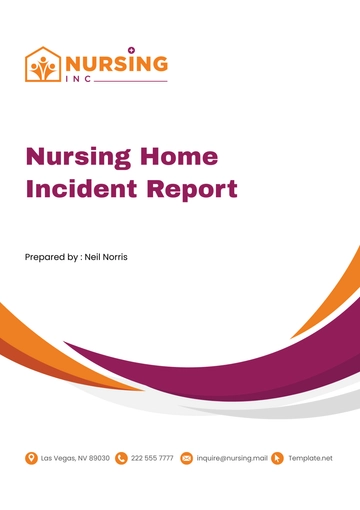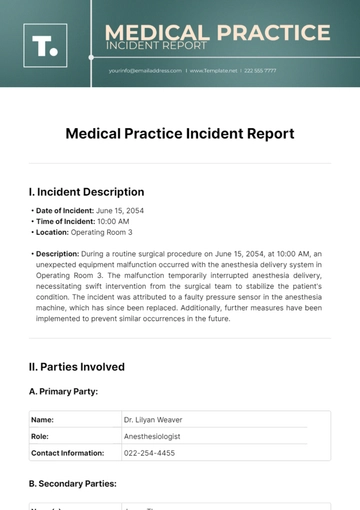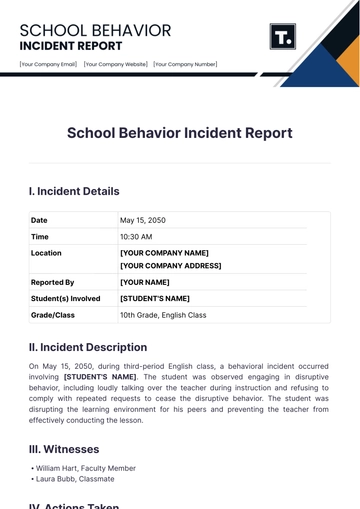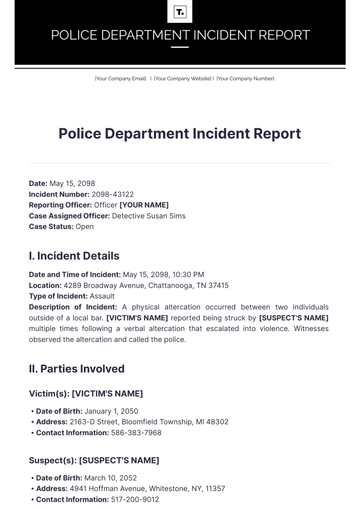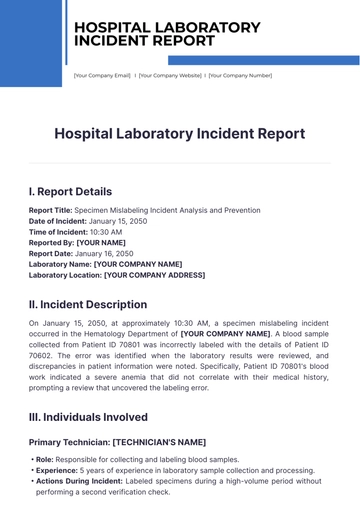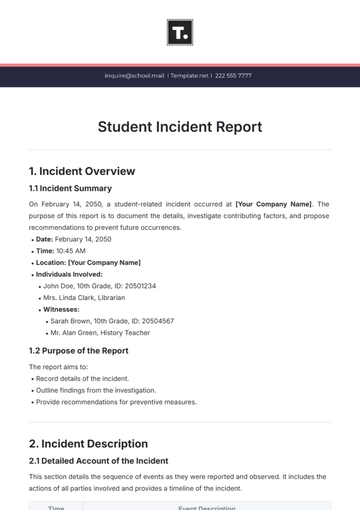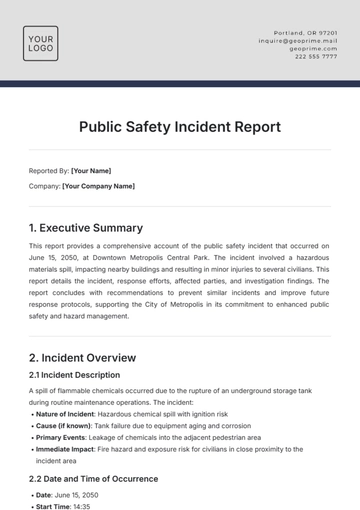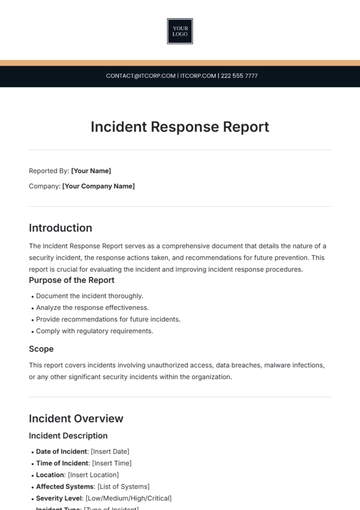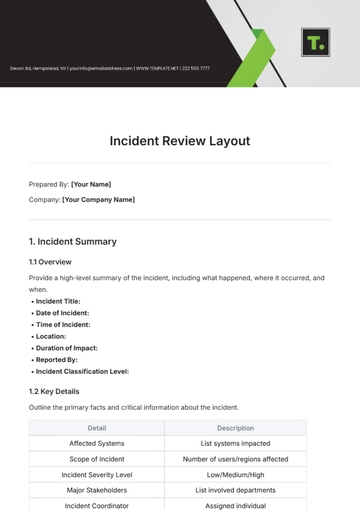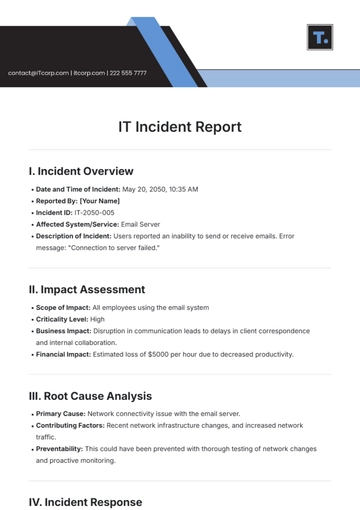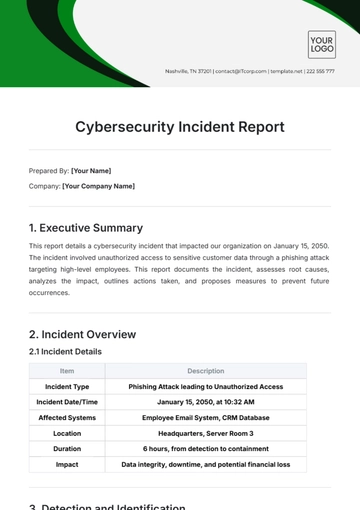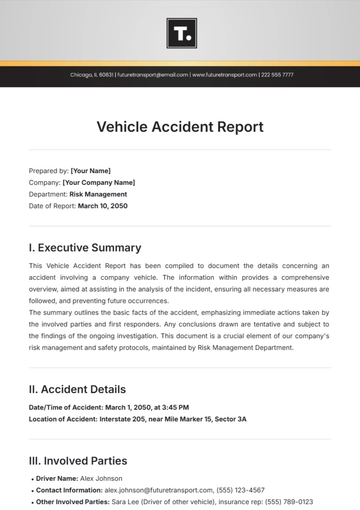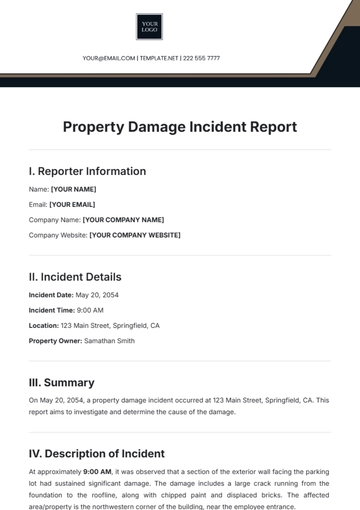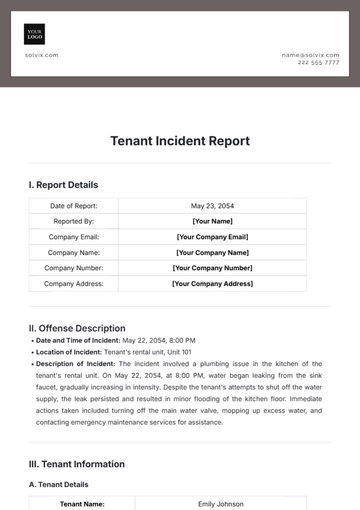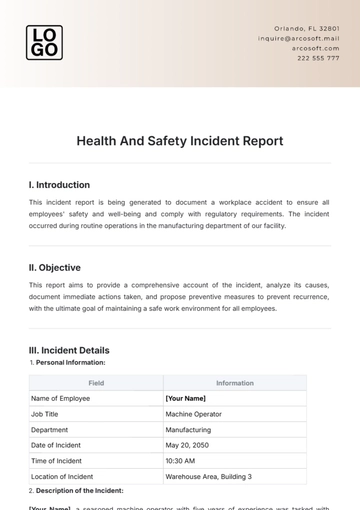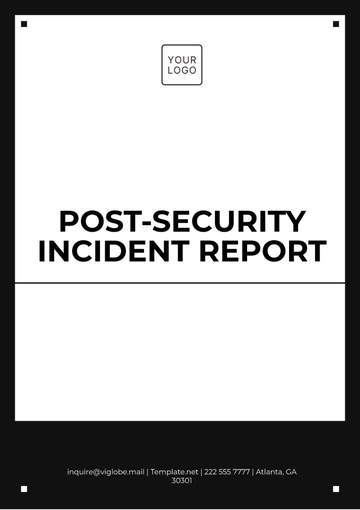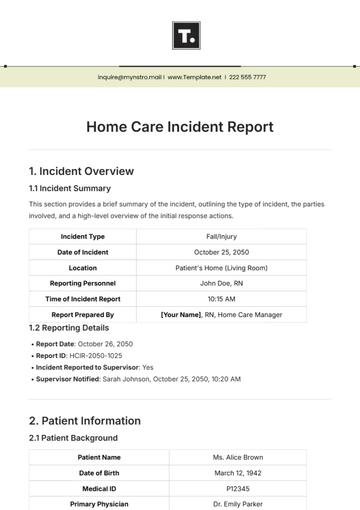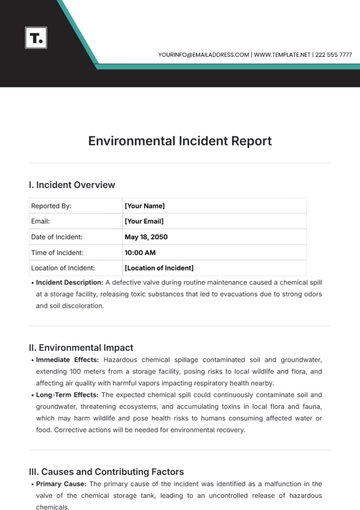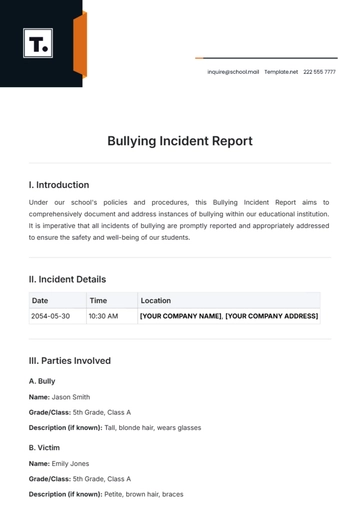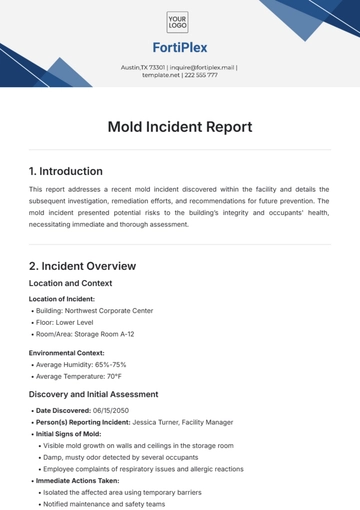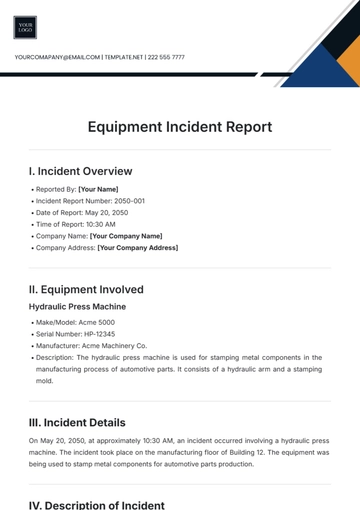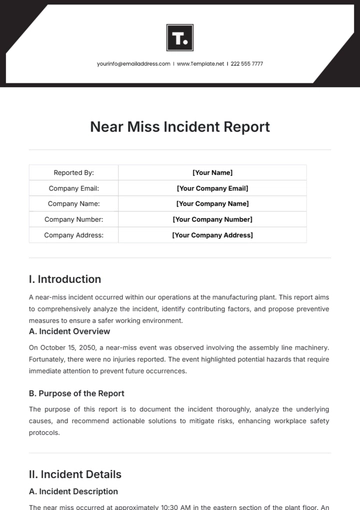Free IT Incident Report
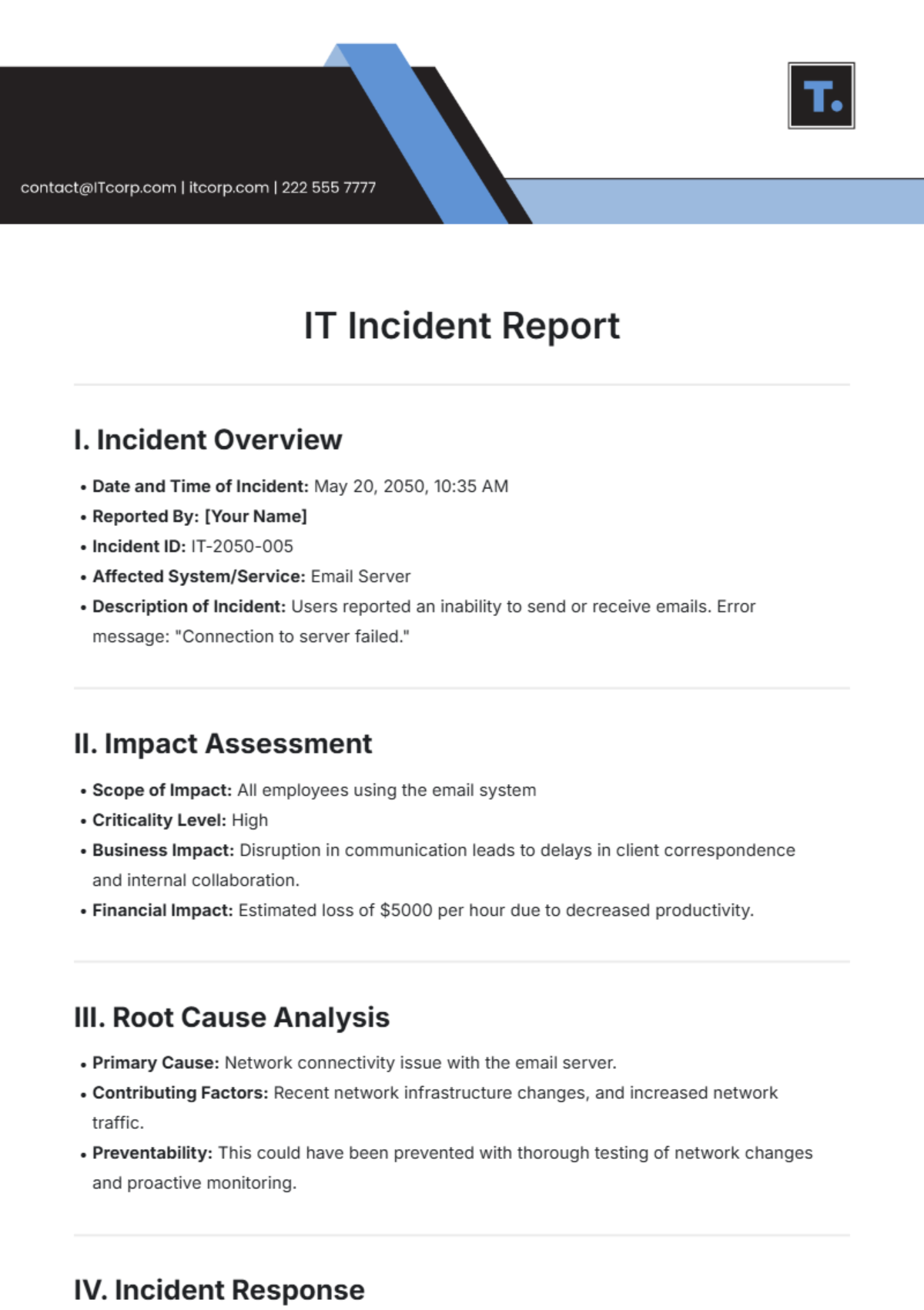
I. Incident Overview
Date and Time of Incident: May 20, 2050, 10:35 AM
Reported By: [Your Name]
Incident ID: IT-2050-005
Affected System/Service: Email Server
Description of Incident: Users reported an inability to send or receive emails. Error message: "Connection to server failed."
II. Impact Assessment
Scope of Impact: All employees using the email system
Criticality Level: High
Business Impact: Disruption in communication leads to delays in client correspondence and internal collaboration.
Financial Impact: Estimated loss of $5000 per hour due to decreased productivity.
III. Root Cause Analysis
Primary Cause: Network connectivity issue with the email server.
Contributing Factors: Recent network infrastructure changes, and increased network traffic.
Preventability: This could have been prevented with thorough testing of network changes and proactive monitoring.
IV. Incident Response
Actions Taken
IT team initiated troubleshooting to identify the source of the connectivity issue.
Communication was sent out to all employees informing them of the issue and providing alternative communication channels.
Engaged network team to resolve the connectivity issue.
Implemented a temporary workaround by routing emails through a secondary server.
Resolution Time: 2 hours
Workarounds Implemented: Emails rerouted through the secondary server to restore communication.
V. Follow-Up Actions
A. Lessons Learned
Importance of thorough testing before implementing network changes.
Need for better communication channels during system outages.
B. Recommendations
Review and update network monitoring procedures.
Conduct regular network infrastructure audits to identify potential issues proactively.
VI. Remediation Steps
Review Network Configuration: Conduct a thorough review of recent network configuration changes to identify any discrepancies or misconfigurations that may have contributed to the incident.
Implement Monitoring Enhancements: Enhance network monitoring procedures to ensure timely detection of any abnormalities or issues, particularly related to critical services such as the email server.
Communication Plan Revision: Update the communication plan for system outages to include alternative communication channels and provide clear instructions to users on how to access support during disruptions.
Training and Awareness: Provide training to IT staff on best practices for network maintenance and troubleshooting to improve response times and resolution efficiency.
Regular Audits: Schedule regular audits of network infrastructure to identify and address potential vulnerabilities or performance bottlenecks before they escalate into critical incidents.
Documentation Updates: Ensure that incident response procedures and documentation are updated to reflect the lessons learned from this incident and incorporate any new remediation steps or preventive measures.
VI. Conclusion
The incident has been successfully resolved with minimal disruption to business operations. The prompt response and collaborative efforts of the IT team led to the swift identification and resolution of the connectivity issue. Moving forward, implementing the lessons learned and recommendations will enhance our preparedness to handle similar incidents effectively and mitigate their impact on our operations.
- 100% Customizable, free editor
- Access 1 Million+ Templates, photo’s & graphics
- Download or share as a template
- Click and replace photos, graphics, text, backgrounds
- Resize, crop, AI write & more
- Access advanced editor
Introducing the IT Incident Report Template from Template.net – your go-to solution for streamlined incident management. This editable and customizable template offers unparalleled convenience, allowing you to tailor reports to your exact needs. Plus, it's editable in our AI Editor too, ensuring effortless customization. Simplify incident documentation and resolution with this essential tool for IT professionals.
You may also like
- Sales Report
- Daily Report
- Project Report
- Business Report
- Weekly Report
- Incident Report
- Annual Report
- Report Layout
- Report Design
- Progress Report
- Marketing Report
- Company Report
- Monthly Report
- Audit Report
- Status Report
- School Report
- Reports Hr
- Management Report
- Project Status Report
- Handover Report
- Health And Safety Report
- Restaurant Report
- Construction Report
- Research Report
- Evaluation Report
- Investigation Report
- Employee Report
- Advertising Report
- Weekly Status Report
- Project Management Report
- Finance Report
- Service Report
- Technical Report
- Meeting Report
- Quarterly Report
- Inspection Report
- Medical Report
- Test Report
- Summary Report
- Inventory Report
- Valuation Report
- Operations Report
- Payroll Report
- Training Report
- Job Report
- Case Report
- Performance Report
- Board Report
- Internal Audit Report
- Student Report
- Monthly Management Report
- Small Business Report
- Accident Report
- Call Center Report
- Activity Report
- IT and Software Report
- Internship Report
- Visit Report
- Product Report
- Book Report
- Property Report
- Recruitment Report
- University Report
- Event Report
- SEO Report
- Conference Report
- Narrative Report
- Nursing Home Report
- Preschool Report
- Call Report
- Customer Report
- Employee Incident Report
- Accomplishment Report
- Social Media Report
- Work From Home Report
- Security Report
- Damage Report
- Quality Report
- Internal Report
- Nurse Report
- Real Estate Report
- Hotel Report
- Equipment Report
- Credit Report
- Field Report
- Non Profit Report
- Maintenance Report
- News Report
- Survey Report
- Executive Report
- Law Firm Report
- Advertising Agency Report
- Interior Design Report
- Travel Agency Report
- Stock Report
- Salon Report
- Bug Report
- Workplace Report
- Action Report
- Investor Report
- Cleaning Services Report
- Consulting Report
- Freelancer Report
- Site Visit Report
- Trip Report
- Classroom Observation Report
- Vehicle Report
- Final Report
- Software Report
